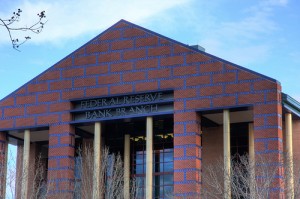 The key component to keeping the economy strong is to regularly have money change hands. If the money is moving, then the economy stays strong. When the great recession began, and the housing bubble burst, a lot of money stopped moving. As it deepened, people lost their jobs, causing the money flow to become stagnant. Instead of just watching this happen, and potentially allowing the US economy to destroy itself, the Federal Reserve jumped in and issued the first round of Quantitative Easing (QE). This stimulus helped to prop up the economy, but the recession was deep, and just a couple years later another round was required. And now, as the recovery is moving along and we are well into QE3, the fed is looking to cut back on their easing.
The key component to keeping the economy strong is to regularly have money change hands. If the money is moving, then the economy stays strong. When the great recession began, and the housing bubble burst, a lot of money stopped moving. As it deepened, people lost their jobs, causing the money flow to become stagnant. Instead of just watching this happen, and potentially allowing the US economy to destroy itself, the Federal Reserve jumped in and issued the first round of Quantitative Easing (QE). This stimulus helped to prop up the economy, but the recession was deep, and just a couple years later another round was required. And now, as the recovery is moving along and we are well into QE3, the fed is looking to cut back on their easing.
What is Quantitative Easing?
Before we can jump into the effects of slowing the third round of QE, we need to know what exactly QE is. The very simplified version is that when money gets “tight” the Fed will step in and take out-of-the-ordinary measure to “ease” the money supply. They pump money back into the economy in order to give easier access to that money. While technically the stimulus from a few years ago where we all received $600, or the payroll tax cut where we saw our taxes drop by 2% are QE’s, they are not what is traditionally referred to. Instead, these easings are not really seen by the every-day citizen. The Fed uses new money (that means they create the money) to buy up treasuries and agency debt. This causes the price of the bonds to rise, and the yield to fall. This helps to manipulate the market and reduce the federal funds rate (which has been at zero for quite some time). The desired effect is to keep interest rates low (allowing banks to have easier access to money, and hopefully they will pass these savings along to the consumer). The secondary effect is that pumping extra money into the system will stave off deflation (which is actually a lot worse than just the cost of goods dropping). Clear as mud? Wikipedia has a longer version, otherwise Google “Quantitative Easing” and you can find everything from the lay-person version to the economist version of the process.
The Latest Round
In September of 2012 the Fed announced they will begin the third round of Quantitative Easing. This round has seen the government buying up mortgage backed securities at $85 Billion per month. Doing so has helped to drive down the interest rates on longer term loans, and subsequently we are seeing record low mortgage rates.
What Happens When This Ends?
The Fed cannot keep up that kind of spending. But they do have a tough job ahead of them. End the spending too quickly and the economy will plunge back into a recession. End it too slowly and we could see a finance bubble. The plan is to taper off the bond buying from $85B per month, down to $50B per month by the end of the year. This will help to give them a gauge of how the markets and economy will react, but it will not have the devastating effects that a sudden cessation of money flow would have. The Federal Reserve Board will meet on June 18 and 19th to decide what course of action to take.
The US job market has seen some great strides recently. This has led the Fed to talk of slowing QE3. Ideally they could back out completely and the economy would support itself. Unfortunately the real world does not function ideally. Without Quantitative Easings, the money would stop moving, deflation would devastate the economy, and years of progress would be lost. The downside is that QE’s end up giving an artificial pretense to the health of the economy. Until the Fed backs out completely we will not know if the US economy is actually sustaining itself.

This is a clear and nice explanation I have read so far on QE. Others had too much complicated fluffing, so soon I got lost or bored to death.
With that said, I do not understand, why is the stock market reacting badly to the easing of the easing, because even my 10 y.o. daughter understands, that the infinite QE is bad for the economy in the long run, so slowing it should be a good move – of course, when FED slows it, they need to check that the patient is still alive, if not speed it back up to support its life supporting functions…